Trumpeter Swans Sighted In The Spring At La Salle Park

There is nothing like strutting your stuff, and that is just what several Trumpeter Swans (Cygnus buccinator) were doing when we showed up on the beach at LaSalle Park in Burlington, Ontario, in the spring of 2013.
Having recently learned that La Salle Park was the birthplace of the restoration program for Trumpeter Swans in Ontario, Bob and I wanted to go to the source and observe any swans remaining there before they migrate further north.
Trumpeter Swans form long-term bonds with their mates, and many of those at La Salle Park were gliding along the water in pairs. Trumpeter Swans in the wild usually live for less than 12 years.
Ongoing banding of the Trumpeter Swans ensures tracking of their migration habits and the success of their nesting.
As you see in our video, it was obvious to Bob and I that some of these Trumpeter Swans had just recently been tagged.
All along the beach and upon the water, the swans seemed to be adjusting to the feel of the tags on their wings. More mature swans were quite accustomed to their tags and went about business as usual.

One swan was intent upon demonstrating the perfect display of composed and elegant grace.
Other swans, meanwhile, by swimming quickly,
Or tugging intently at the tags with their beaks, either tried to remove the newly-placed bands or simply get used to them.
Perhaps these showy displays of individual prowess can be attributed to an elaborate courting ritual. It is spring after all!
One thing is for sure, though. The swans were getting lots of exercise as they stretched and flapped their wings, at the same time providing a spectacle of majestic beauty for all those onlookers on the nearby shore.
Bob and I have had occasion to see a Black Swan (Cygnus atratus) one time when canoeing on the Otonabee River near Peterborough.
A day-long exploration of the quiet backwaters of the river turned up several species of birds but none so surprising as the Black Swan.
Black Swans are not native to Ontario, having originated in Australia. They are commonly displayed in zoological gardens and bird collections, so this errant specimen must have escaped into the wild. When swimming, Black Swans hold their necks in an arched or erect fashion, and often carry their feathers or wings raised in an aggressive display. Such a display creates a beautiful ruffled effect making the bird very elegant and dainty in appearance.
The angelic grace and subdued strength of the Trumpeter Swan belies its ability to withstand severe winter temperatures of up to -30 Celsius for extended periods of time. This is due to their unusually dense layer of down that is up to 5 cm thick and makes them almost impervious to the cold. I would like to see a Black Swan try that on for size!
Related:
Trumpeter Swan Cygnets Growing Up At Milliken Park

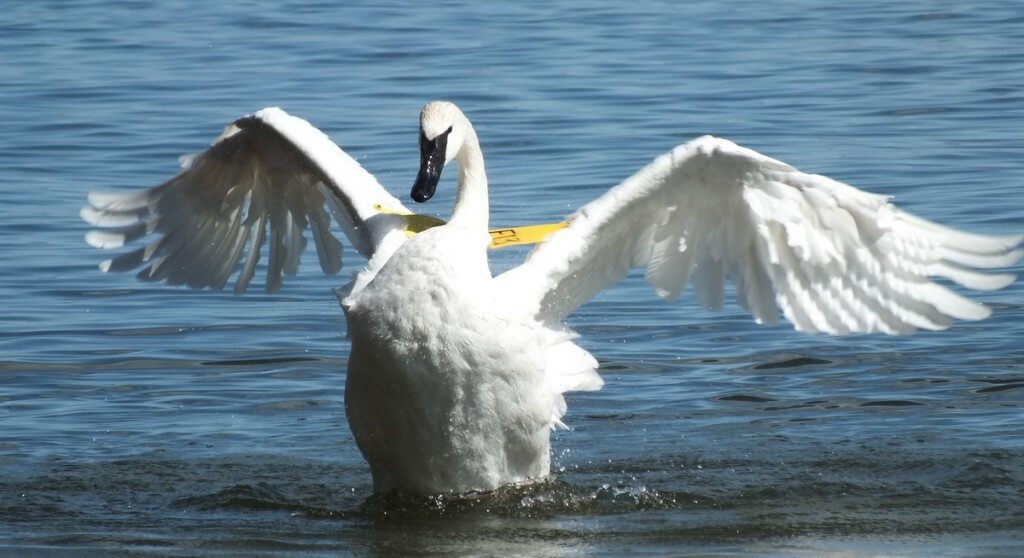
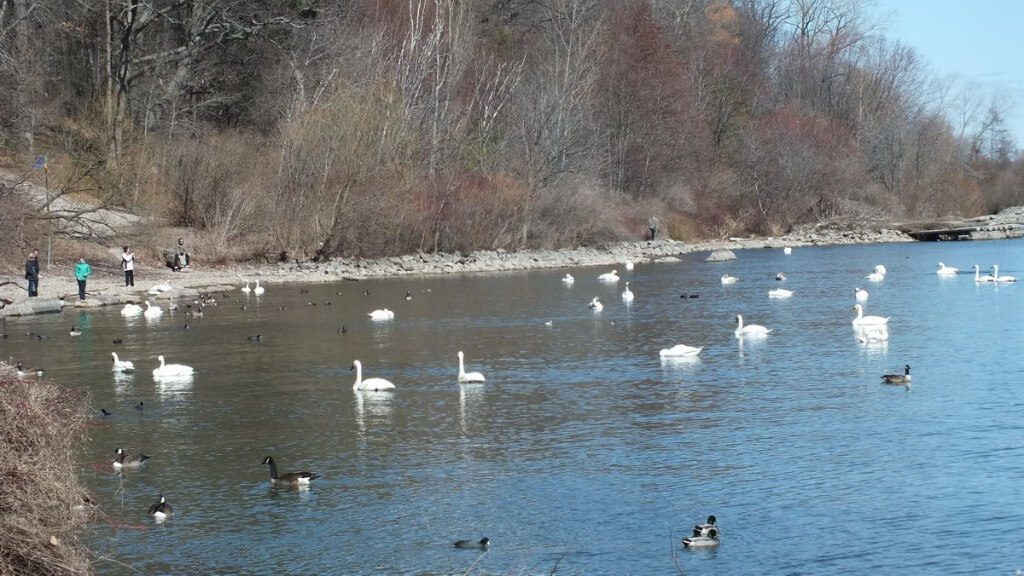
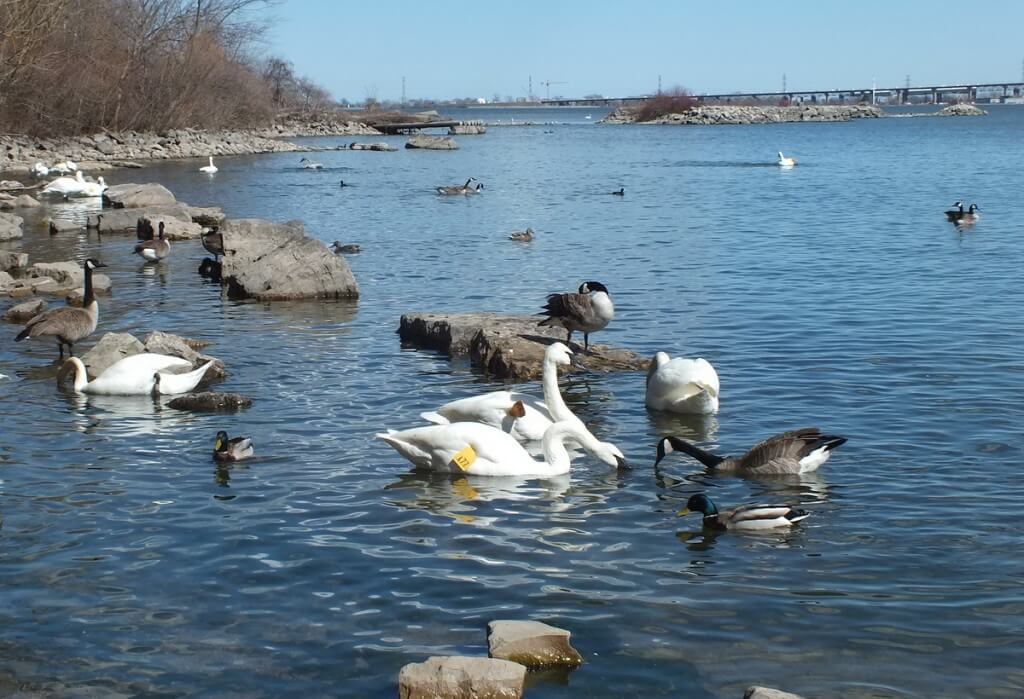
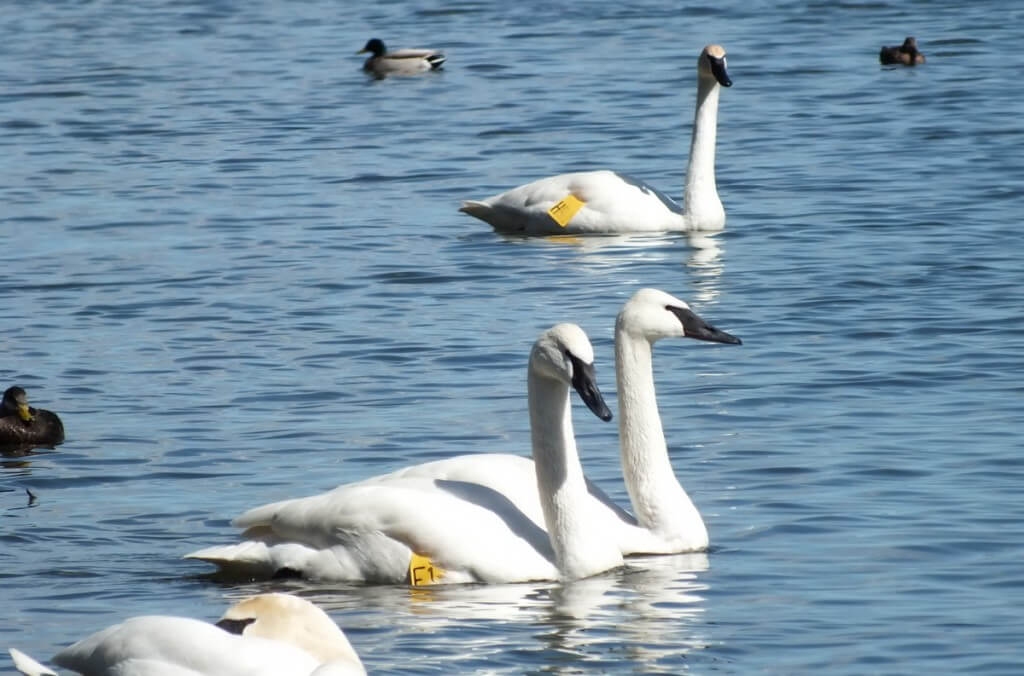
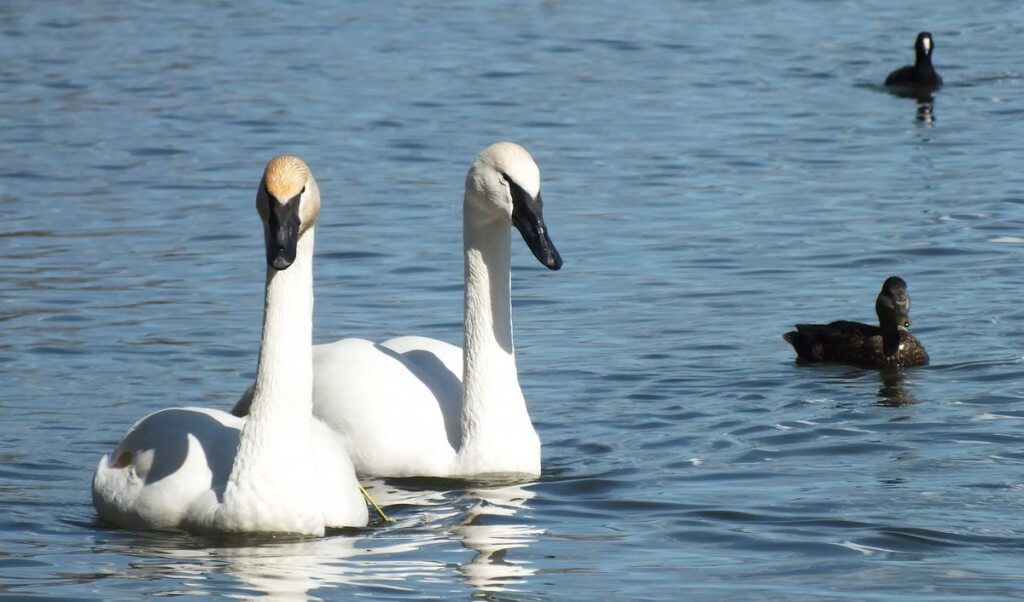

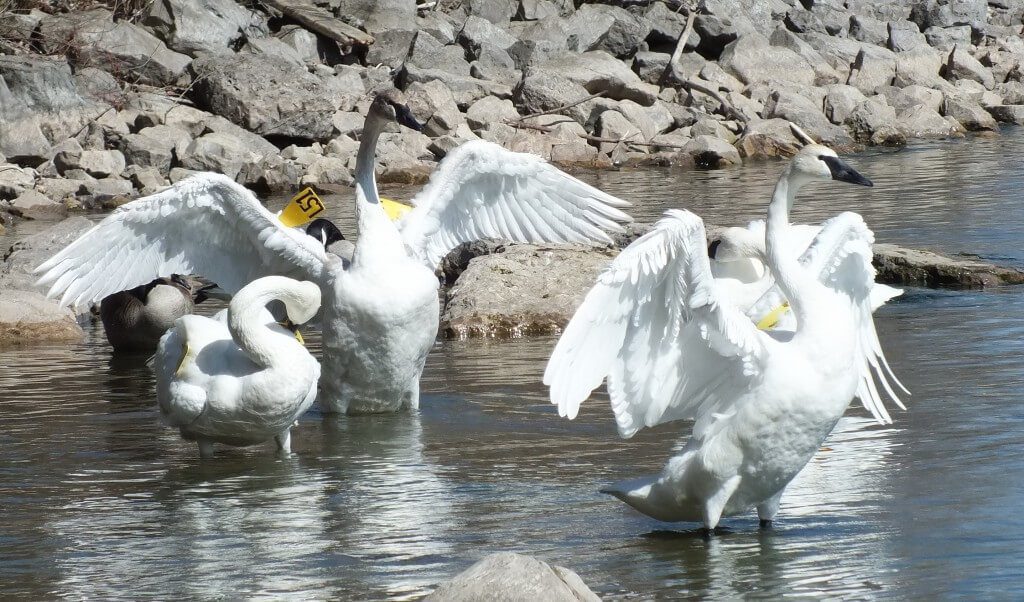
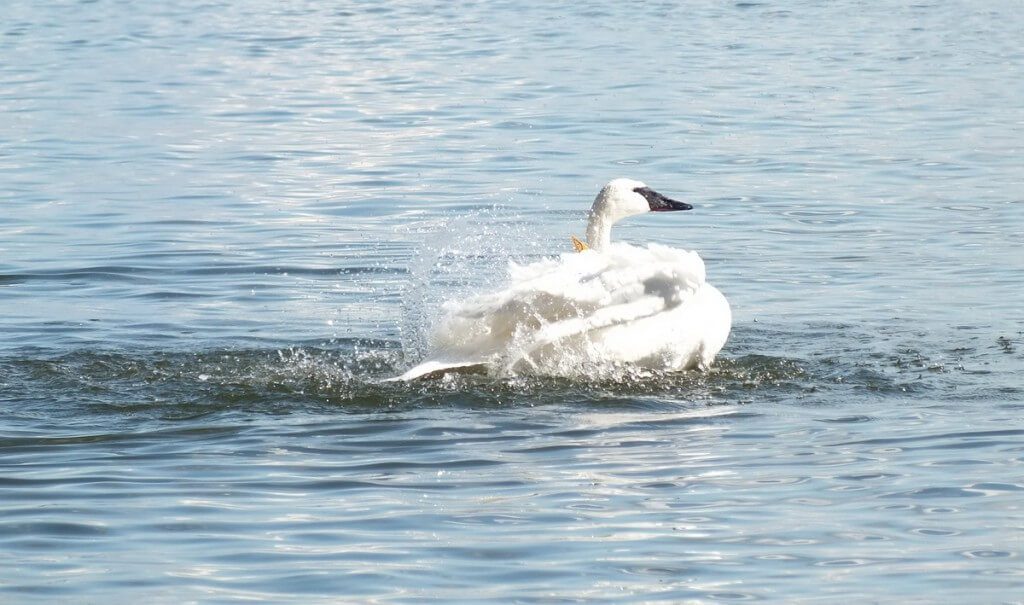
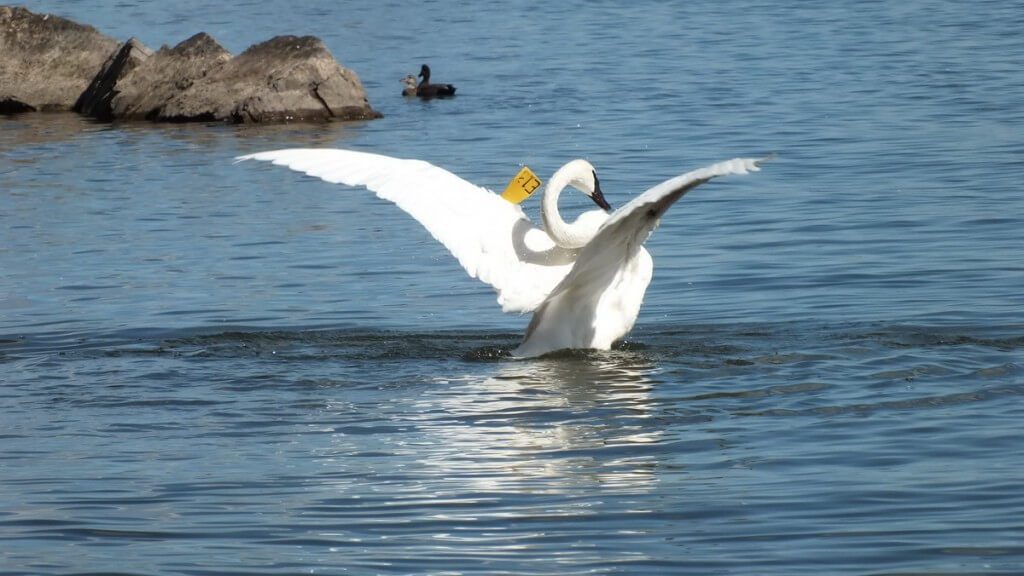
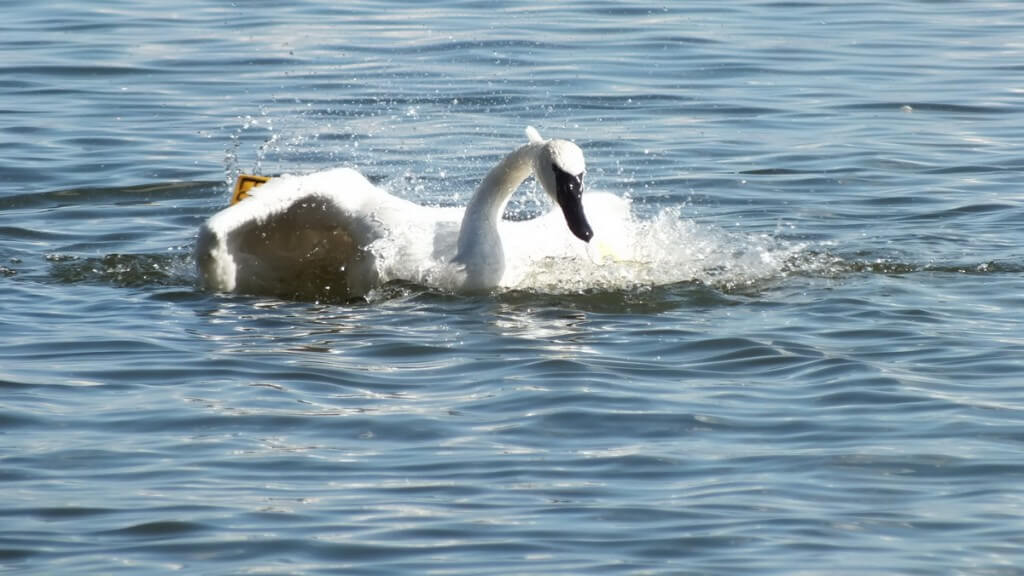


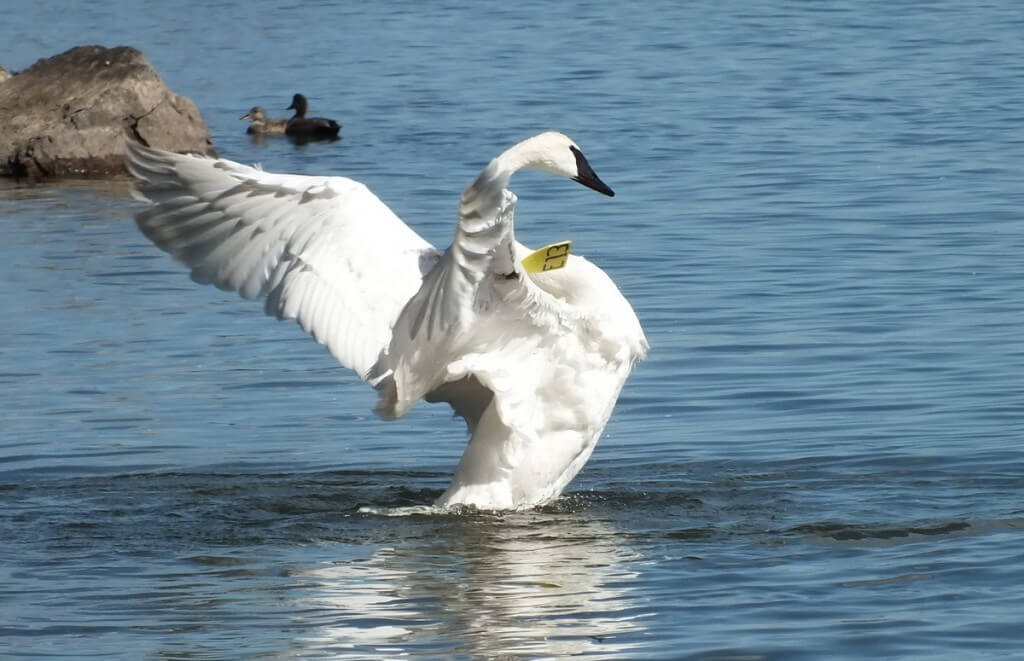

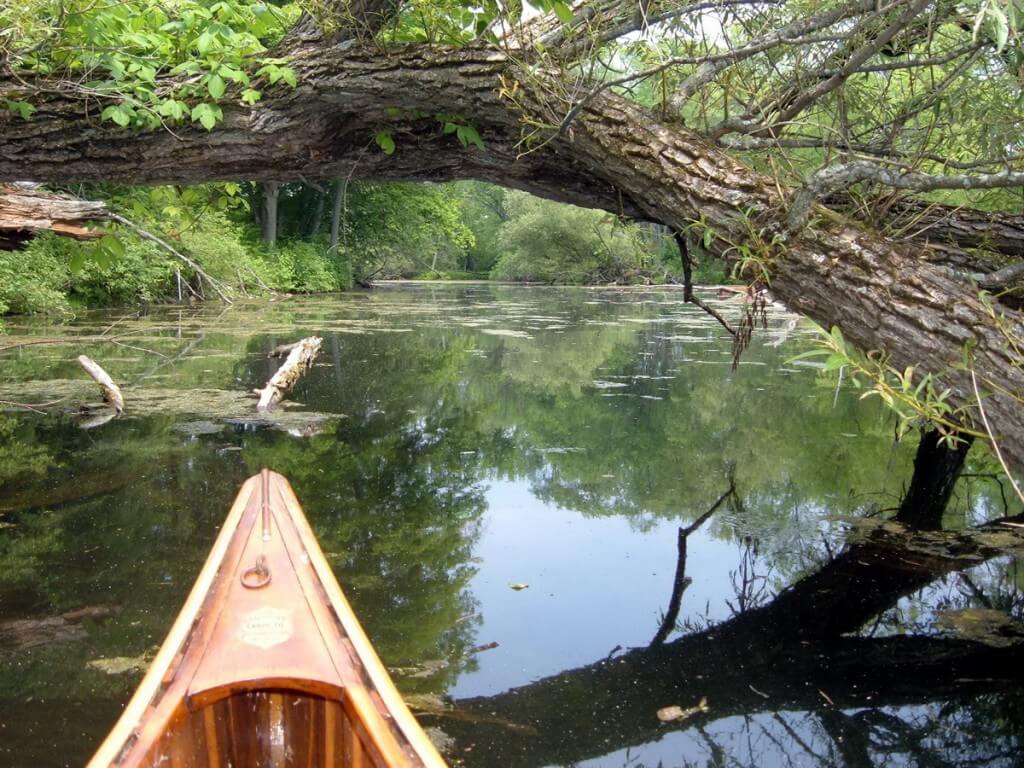
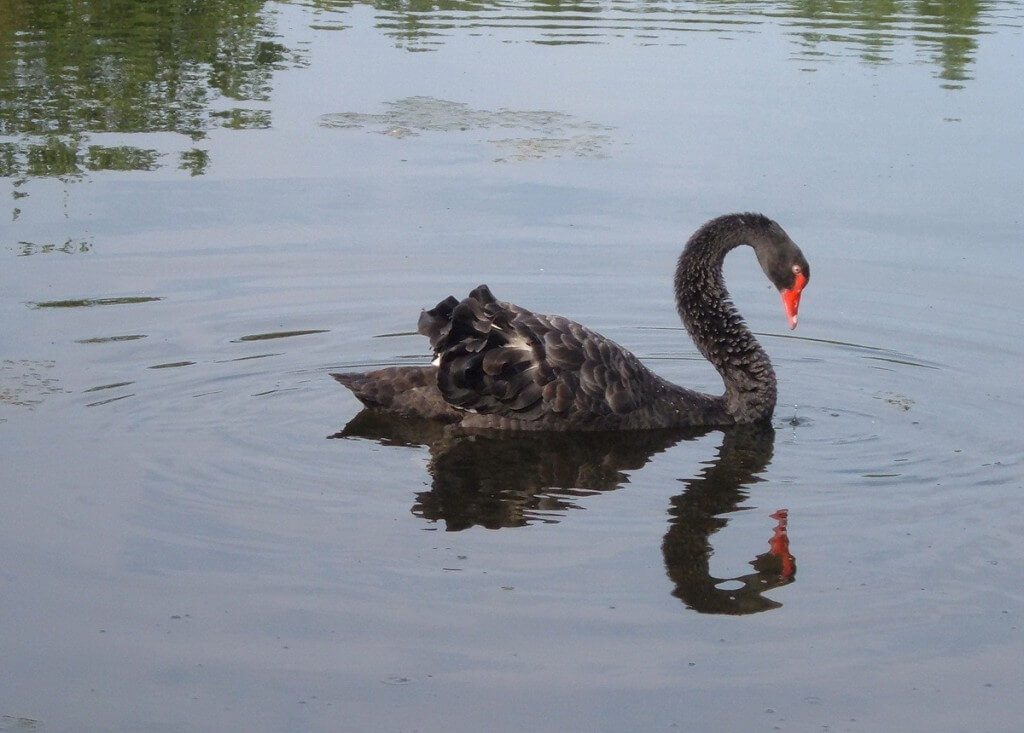
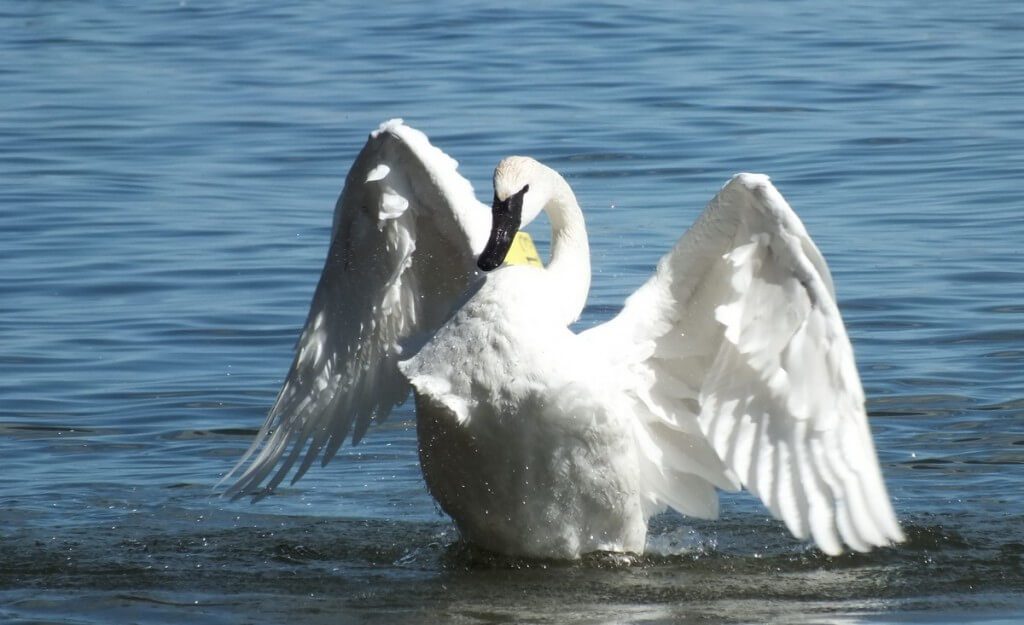
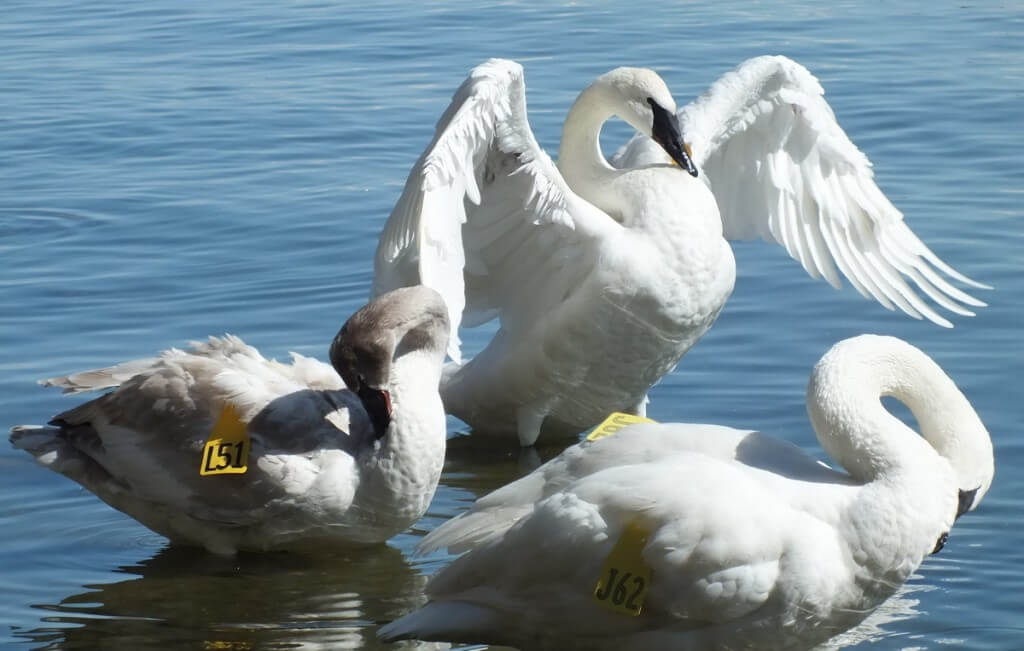

The Ontario Trumpeter Swan Restoration Group started in 1982. Since then 584 birds have been released into the wild, hence the yellow tags on their wings. The recovery of the trumpeter swan has been good, despite two threats to their survival — lead poisoning in the wild from shotgun pellets, and introduction of the invasive mute swan from Europe. But the invasive black swan from Australia does not seem to pose a threat.